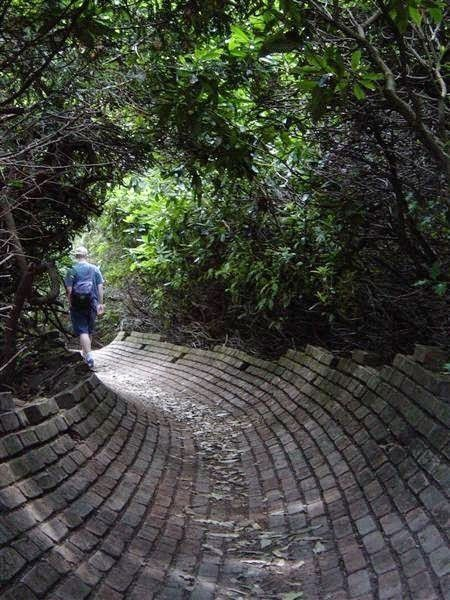Introduction: The Emerging Vision of Urban Data Gardens

Cities today stand at a technological and ecological crossroads. Urban populations continue to grow, digital data generation explodes, and sustainability becomes a pressing imperative. In this context, Urban Data Gardens represent a visionary fusion of digital infrastructure and green urbanism—a concept where urban greenery and technological innovation converge to transform cities into living data repositories, regenerative ecosystems, and vibrant community spaces.
Urban Data Gardens extend the traditional notion of urban community gardens by incorporating advanced data storage, sensing, and ecological functions in plants and vegetation. Imagined as city-scale living archives, these gardens not only provide greenery and local food production but also novel modes of data preservation—such as embedding digital archives into the DNA of plants—and contribute to urban cooling, biodiversity restoration, and social cohesion.
This comprehensive article explores Urban Data Gardens as a breakthrough for sustainable cities. It covers their origins and evolution, enabling technologies, multifaceted environmental and social benefits, economic and educational impacts, innovative examples including DNA data storage forests, implementation challenges, integration with smart cities, and future prospects. The goal is to illuminate how Urban Data Gardens can become key players in building resilient, adaptive, and meaningful urban landscapes.
1. Origins and Evolution of Urban Data Gardens

Urban gardens have long served as multifunctional assets—from food production and recreation to social inclusion and wildlife habitat. Across the 20th century, community gardens, pocket parks, and allotment networks proliferated to fulfill social needs in expanding cities.
The rise of the data-driven city reframed urban management and planning around vast sensor networks, IoT, and digital analytics. These advances, however, led to concentrated data centers with large carbon footprints and centralized control.
Urban Data Gardens emerged as a conceptual innovation at this intersection—advocating that cities should not only collect and process data but grow data organically and locally, merging computation and ecology. The foundational research includes:
- The Urban Data Forest project in The Hague, Netherlands, proposing trees as data storage media via synthetic biology and DNA encoding.
- Community-driven urban agriculture initiatives integrating smart technology to optimize plant health and environmental monitoring.
- Efforts to convert the invisible digital infrastructure into visible, living landscapes that encode cultural heritage and individual citizen data in organic forms.
Thus, Urban Data Gardens mark a shift from purely electronic data storage to biological, regenerative data ecosystems at the city scale.
2. Technologies Powering Urban Data Gardens

Urban Data Gardens leverage a suite of cutting-edge technologies and scientific advances:
2.1 Biological Data Storage in Plants
Taking inspiration from nature’s data encoding—DNA—the gardens use synthetic biology to store digitized information within plant genomes. Recent advances in DNA data storage allow colossal volumes of data to be stored stably, compactly, and with low energy demand compared to electronic data centers.
- Data (e.g., public archives, personal memories, even blockchain records) are encoded into DNA sequences.
- These sequences are introduced into plants or microbial communities within gardens, creating living, regenerating data repositories.
This approach opens pathways for evergreen archives with natural self-replication and repair.
2.2 Sensor Networks and IoT Integration
Environmental sensors embedded in gardens continuously track soil moisture, nutrient levels, temperature, and air quality.
- IoT connectivity allows real-time monitoring and automated care (e.g., irrigation) optimizing plant health and data integrity.
- Data from sensors feed into distributed urban management systems, enabling both ecological and informational sustainability.
2.3 Artificial Intelligence and Data Analytics
- AI models analyze plant health, environmental changes, and data storage fidelity.
- Machine learning processes longitudinal data streams, adapting care protocols, and ensuring data authenticity and accessibility.
- Citizen interfaces allow users to track their digital archives in living form, engage in stewardship, and explore cultural collections encoded in the gardens.
2.4 Distributed Ledger Technologies and Security
- Blockchain and distributed ledgers secure the provenance, access rights, and immutability of data stored biologically.
- Public and private keys regulate data sharing, ensuring privacy and transparency.
3. Environmental Benefits of Urban Data Gardens

Urban Data Gardens bring numerous ecosystem advantages central to urban sustainability:
3.1 Carbon Sequestration and Air Quality Improvement
- Vegetation absorbs significant amounts of CO2, mitigating urban carbon emissions.
- Plants filter particulate matter and pollutants from the air, contributing to healthier city atmospheres.
3.2 Urban Heat Island Mitigation
- Green plants shade surfaces and release moisture via evapotranspiration, reducing local temperatures by up to several degrees Celsius.
- This effect eases demands on urban cooling and air conditioning, supporting energy conservation.
3.3 Biodiversity and Habitat Creation
- Gardens sustain pollinators, birds, and beneficial insects within harsh urban landscapes.
- Plant diversity enhances ecosystem resilience and urban ecological connectivity.
3.4 Stormwater Management and Soil Health
- Gardens absorb rainfall, lowering flood risks and improving groundwater recharge.
- Healthy soils with active microbial communities sequester carbon and cycle nutrients efficiently.
4. Social and Community Impacts

Urban Data Gardens foster meaningful social dynamics that enrich neighborhoods:
4.1 Community Engagement and Empowerment
- Gardens serve as gathering points where people of diverse backgrounds collaborate on care, gardening, and data stewardship.
- They support participatory monitoring and co-creation of public data commons.
4.2 Mental Health and Wellbeing
- Access to green spaces and contact with nature reduce stress, anxiety, and urban alienation.
- The tangible connection to living data storage instills pride and identity.
4.3 Education and Cultural Preservation
- Gardens operate as open-air classrooms teaching sustainable practices, environmental literacy, and digital heritage.
- Encoding cultural data in plants preserves community stories and traditions in bioarchives accessible to all generations.
4.4 Economic Opportunities
- Jobs emerge for bioinformatics gardeners, data curators, and ecosystem stewards managing this hybrid living-digital infrastructure.
- Local food production and climate adaptation bolster urban economic resilience.
5. Economic and Educational Advantages of Urban Data Gardens

5.1 Reduced Data Infrastructure Costs and Impacts
- By shifting data storage from energy-intensive electronic centers to biological media, operational costs and carbon footprints decline dramatically.
- Decentralized urban gardens reduce data latency and enhance localized access.
5.2 Stimulating Innovation and New Sectors
- Markets develop around bio-secured data storage, genetic data encoding services, and regenerative landscaping integrated with digital archiving.
- Interdisciplinary collaborations between botanists, computer scientists, and city planners thrive.
5.3 Community Learning Hubs
- Gardens become centers for STEM and environmental education, blending biotechnology and sustainability curricula.
- Hands-on workshops generate local expertise in both ecological management and data sciences.
6. Case Studies and Exemplars of Urban Data Gardens

6.1 The Urban Data Forest, The Hague
- A pioneering initiative integrating DNA data storage in trees and plants throughout public spaces.
- Two complementary facilities: The Breathing Museum archives cultural and public data accessible through garden interaction; Living Archives offer citizens personal plots for secure private data storage in plants.
- The project envisions a regenerative urban data cloud aligned with ecological restoration.
6.2 Smart Urban Gardens with IoT Sensing
- Experimental community gardens equipped with AI-powered sensors for soil, climate, and plant health data collection.
- These setups optimize food yields while providing open data for urban agricultural research.
6.3 Community Networked Gardens
- Cities like Barcelona and Pittsburgh foster networks of gardens linked by digital platforms for resource sharing, social events, and collective planning.
- Data-informed garden management aligns with urban sustainability goals.
7. Challenges Facing Urban Data Gardens

7.1 Technical and Scientific Complexity
- Manipulating biological systems to reliably encode digital data at scale remains research-intensive.
- Ensuring data redundancy, access speed, and error rates requires ongoing innovation.
7.2 Regulatory and Privacy Issues
- Bio-encoded data raises novel privacy considerations, including genetic data security and ownership rights.
- Governance frameworks for bio-digital assets lack standardization.
7.3 Urban Land Availability and Equity
- Securing accessible plots in dense cities is challenging.
- Ensuring equitable access across socioeconomic lines demands inclusive policy and design.
7.4 Climate and Plant Species Constraints
- Local climate suitability for candidate plant species affects data storage longevity and garden viability.
- Invasive species risks and ecological balance must be carefully managed.
8. Future Prospects and Integration with Smart Cities

8.1 Scaling Urban Data Gardens as Infrastructure
- Cities may designate coordinated urban data gardens as official facilities for citizen data sovereignty and public cultural archiving.
8.2 Interoperability with IoT and Edge Computing
- Gardens can integrate with city-wide sensor networks, offering distributed computation and environmental sensing.
8.3 Data-Driven Ecosystem Management
- AI systems could dynamically optimize both plant health and data integrity through environmental controls.
8.4 Community-led Bio-Digital Platforms
- Empowering residents to contribute to and govern urban data gardens fosters democratic data stewardship.
8.5 Educational and Experiential Tourism Potentials
- Gardens that function as biotechnological museums and living archives attract visitors and raise awareness.
Conclusion: Cultivating the Future of Cities Through Urban Data Gardens
Urban Data Gardens present a bold vision that merges digital innovation, ecological sustainability, and community empowerment in the urban fabric. By turning parks, green roofs, and community gardens into living data ecosystems, cities unlock new forms of environmental healing, cultural preservation, and social connection.
Beyond their technological marvel, Urban Data Gardens emphasize human-nature symbiosis, repositioning urban data as something not merely produced and consumed but grown, shared, and cherished. As these gardens mature, they promise to reshape not only how cities manage data but how they live and breathe.
For planners, technologists, environmentalists, and citizens alike, embracing Urban Data Gardens invites participation in a regenerative urban future—one where data and life intertwine to nurture place, memory, and resilience.
For expert consultation on Urban Data Gardens design, bio-digital infrastructure development, and community integration, please contact:
Mishul Gupta
Email: contact@mishulgupta
Phone: +91 94675 99688
Website: www.mishulgupta.com
